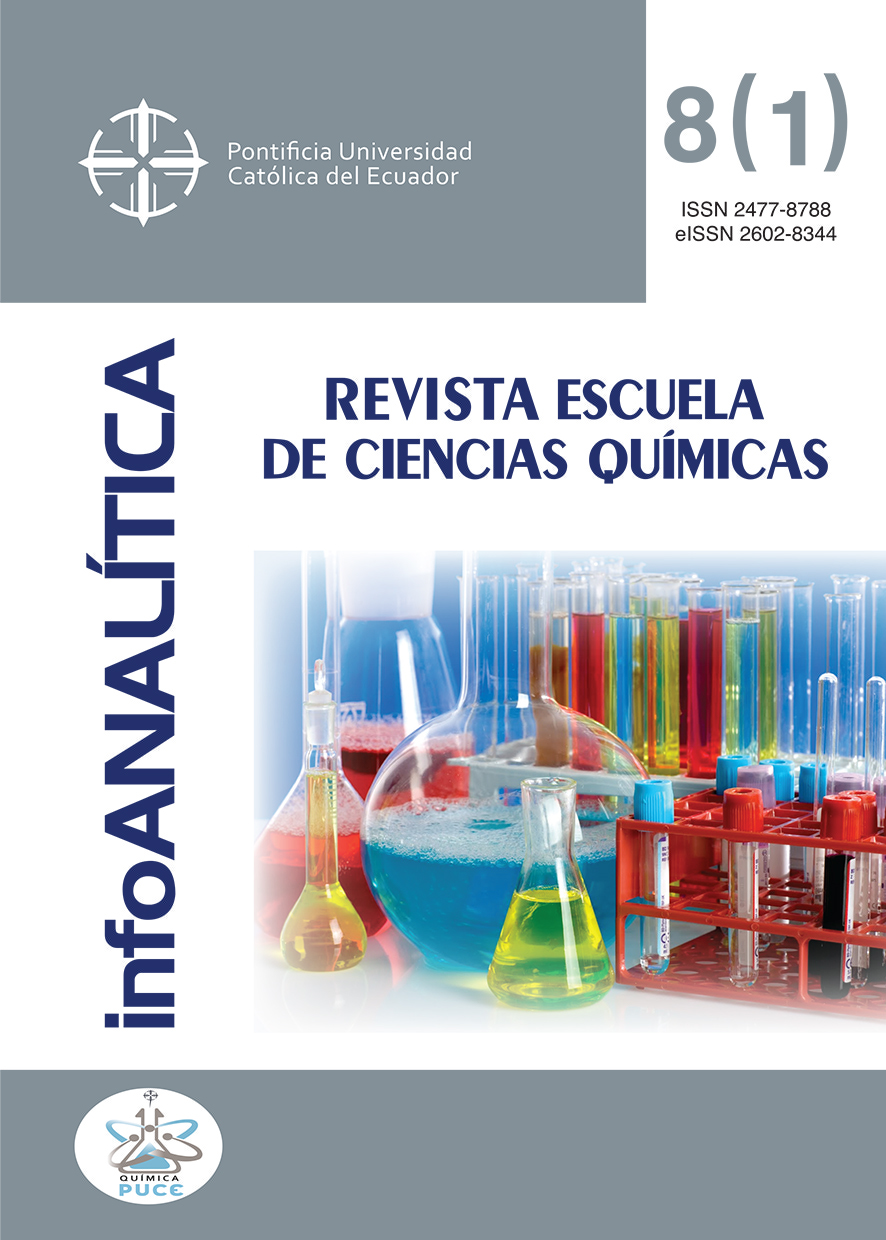ANALYTICAL-TECHNICAL CORRELATION BETWEEN LABORATORY TESTS OF RESILIENT MODULE AND CALIFORNIA BEARING RATIO OF THE MINE COPETO
Main Article Content
Abstract
An analytical-technical correlation between laboratory tests of Resilient Module and California Bearing Ratio for an aggregate that comes from the Copeto Mine (Toachi - Santo Domingo de Los Tsáchilas-Ecuador) is reported, which yields real useful values in the optimization of the material used in road projects, through the obtaining of the Resilient Module. The study is based on the qualification of the mine, through physicochemical tests, which allows to know the characteristics of the aggregates that make it up, according to ASTM standards. We report real values in the behavior of the materials that are going to be used in the structure of the road, which results in thicknesses of smaller layers, as in the base (a reduction of 5 cm) that, at the time of construction It reduces the delivery time, the amount of material and therefore the final cost of the construction of the road.
Downloads
Article Details
- The authors agree to respect the academic information of other authors, and to assign the copyrights to the journal infoANALÍTICA, so that the article can be edited, published and distributed.
- The content of the scientific articles and the publications that appear in the journal is the exclusive responsibility of their authors. The distribution of the articles published in the infoANALÍTICA Journal is done under a Creative Commons Reconocimiento-CompartirIgual 4.0 Internacional License.
References
Unidos.
AASHTO. (2012). AASHTO T307-99 - Determinación del Módulo Resiliente de Suelos
y Materiales de Agregado.Washington, Estados Unidos.
ASTM INTERNATIONAL. (2005). ASTM D4318-84-Los métodos de estándar de ensayo
para Límite Líquido, Límite Plástico, Índice de Plasticidad de los suelos. West
Conshohocken, Estados Unidos.
ASTM INTERNATIONAL. (2006). ASTM C127-Gravedad específica y absorción del agregado
grueso.West Conshohocken, Estados Unidos.
ASTM INTERNATIONAL. (2006). ASTM C128-Gravedad específica y absorción del agregado
fino.West Conshohocken, Estados Unidos.
ASTM INTERNATIONAL. (2006). ASTM C131-Determinación de la resistencia al desgaste,
del agregado grueso de tamaño hasta de 37.5 mm (1 1/2 pulg), por
abrasión e impacto en la Máquina de los Ángeles.West Conshohocken, Estados
Unidos.
ASTM INTERNATIONAL. (2006). ASTM C142-97 Determinación de terrones de arcilla
y de partículas friables (desmenuzables) en los agregados. West Conshohocken,
Estados Unidos.
ASTM INTERNATIONAL. (2006). ASTM C33-Granulometría de agregados. West Conshohocken,
Estados Unidos.
ASTM INTERNATIONAL. (2006). ASTM C40-99-Contenido orgánico de la arena. West
Conshohocken, Estados Unidos.
ASTM INTERNATIONAL. (2006). ASTM C88-Durabilidad de los agregados a la acción
del sulfato de sodio o sulfato de magnesio.West Conshohocken, Estados Unidos.
ASTM INTERNATIONAL. (2006). ASTM D2419-Equivalente de arena en suelos y agregado
fino.West Conshohocken, Estados Unidos.
Camacho, J. (2013). Determinación de la capacidad de soporte C.B.R. del suelo.Valparaíso,
Chile: Pontificia Universidad Católica de Valparaíso. Recuperado el 14
de septiembre de 2018.
Gárnica Anguas, P., Pérez García, N., & Gómez López, J. A. (2001). Módulos de resilencia
en suelos finos y materiales granulares. Sanfandila, México.
Herrera Montealegre, M. (2014). Determinación del módulo resiliente de diseño de pavimentos
mediante criterrios AASHTO 1993 y 2002. Lima, Perú: Universidad
de Piura. Recuperado el 14 de septiembre de 2018
Higuera Sandoval, C. H. (1989). Correlaciones CBR - Módulo Resiliente. Colombia.
Transport Road Laboratory. (1984). Transport Road Laboratory. Lister - New York, Estados
Unidos.
Universidad de Chile. (2006). Apuntes de Laboratorio CI44A. Santiago de Chile, Chile.
Villafuerte Bermúdez, L. E., & Ortega Calle, K. G. (2015). Evaluación estructural de pavimento
flexible para suelos de tipo limo arenoso. Quito, Ecuador.
Villalobos Orchard, J. (2016). Departamento de Geología Universidad de Chile. Recuperado
el 5 de mayo de 2018, de Las rocas y su proceso de formación:
http://www.geologia.uchile.cl/las-rocas-y-sus-procesos-de-formacion
Yánez C, G. (2018). Guía Laboratorio de Pavimentos 2018. Quito, Ecuador.

